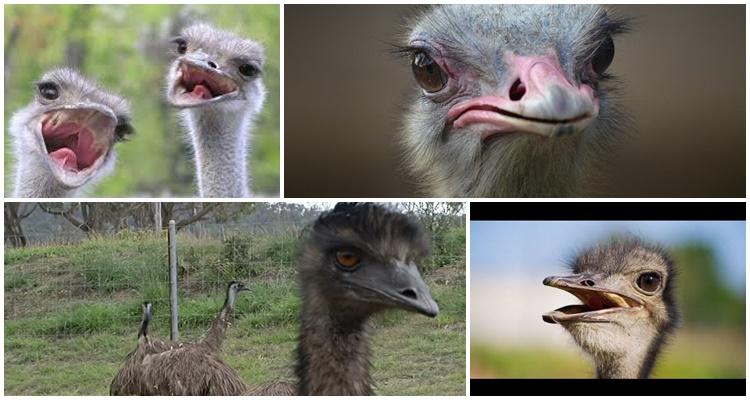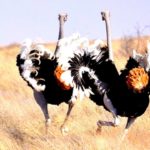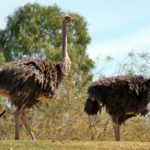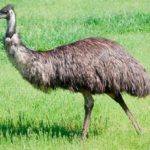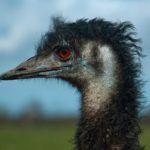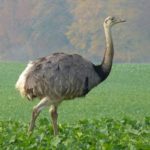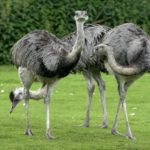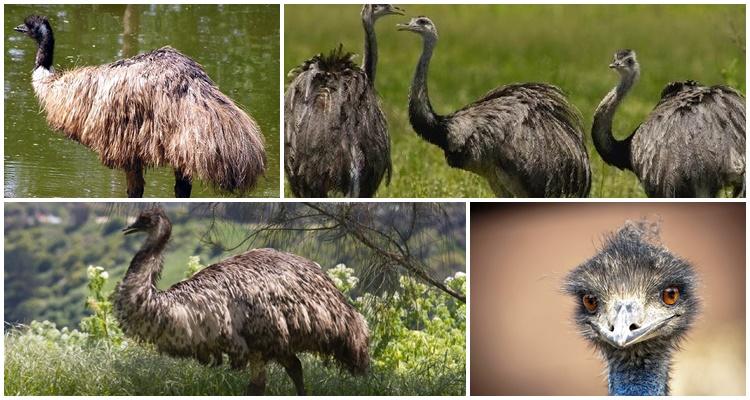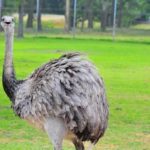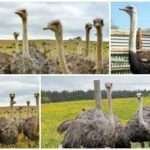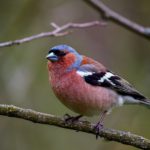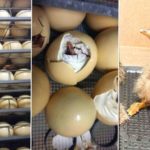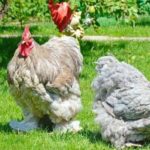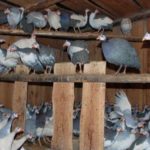Ostriches are a species of birds exotic for Russia. But recently they are increasingly bred on home farms as farm animals. Meat, eggs, and other types of products are obtained from them. Let's consider the description and characteristics of the ostrich as a bird, the most bred breeds, their advantages and disadvantages, as well as the features of growing them at home.
General description of birds
This is the largest flightless bird. Thanks to its long legs and wide stride, it can reach speeds of 55 km/h.Adults weigh 60-150 kg, with an average of 100 kg. During the first year, only half of the final weight is gained. The height of 3-year-old males reaches 2.1-2.8 m, females - 1.7-2 m.
The body plumage is mostly black, the wings and tail are white. Females and young are grayish-brown, chicks are fawn with dark brown spots. The head and neck are covered with fine gray down. The skin of birds in visible areas is pinkish or gray, depending on the species. Ostriches have the longest legs among birds, but they are famous for more than that - they have 2 toes, not 4, and only the largest of them grows a claw. According to scientists, a decrease in the number of fingers contributes to running speed and was a consequence of adaptation in the fight against predators.
In nature, ostriches live in groups of 5-50. When in danger, birds either hide or run away. In defense, they can kick.
Ostriches have many differences from other birds in the structure of their bones, digestive, excretory and reproductive systems.
Where do they live?
Ostriches of different species live in Africa, 3 species are called the North, South and East African ostrich. The first of them is the most common and largest. Another species found in Africa is the Somali ostrich. On this continent, birds are found in savanna, semi-desert and desert. In addition to Africa, ostriches live in Australia (emu) and South America (rhea).
Ostrich breeds
At home, you can breed African ostriches, emus and rheas. Which breed to choose depends on the characteristics and purpose of cultivation.
African ostriches
The black African breed is popular in meat farms. Its representatives are the largest, from them you can get the most products.They are also sold as breeding birds, which turns out to be even more profitable than selling them for meat.
Despite investments at the early stage of cultivation, an ostrich farm pays for itself in 2, maximum 3 years.
Emu
The main type of emu product is considered to be the production of fat, which is used for the production of medical drugs.
Nandu
Despite the small size of the birds, a farm for raising them can also be profitable; you can earn income faster due to the precocity of rheas.
What is the best breed to breed?
All ostrich breeds have pros and cons. The choice depends on what you plan to eat - meat, eggs or fat. Black African breeds and emus are suitable for meat production, and rhea for egg production.
Features of keeping ostriches at home
Despite their large size, ostriches are shy and even aggressive. They have good hearing and vision, males can react sharply to sudden movements and strong or unexpected sounds.This feature of behavior must be taken into account when working with birds, so as not to provoke ostriches into aggression; they must be handled calmly and worked slowly.
On ostrich farms, one of 3 growing methods is used. Intensive involves keeping birds in a limited area and feeding them with imported food. Extensive – keeping practically in the wild, on a large territory (1 hectare for 10 individuals).
A special feature of the ostrich house is its high (3-3.5 m) walls made of durable material. Hangars or livestock farms are ideal for this bird. When arranging a poultry house, you need to take care of insulation, lighting and ventilation. In summer, the temperature should not be below zero; a comfortable summer temperature is 20˚C. Humidity – no higher than 60%, lighting – at least 9 hours a day.
Caring for ostriches consists of cleaning the bedding, feeding and watering 3 times a day. Next to the poultry house there should be a spacious walking pen in which the birds will rest. The area must be surrounded by a high, at least 2 m, strong mesh. If possible, birds should be released there, even in winter, when there is no severe frost. If the pen is large, you can keep the bird there from spring to autumn, you just need to put feeders and drinking bowls inside, as well as a canopy where the ostriches will hide from bad weather. The area needs to be cleared of debris - glass, metal objects that birds can swallow.
Breeding ostriches can be profitable. You can choose any breed for cultivation, you just have to consider their pros and cons.

